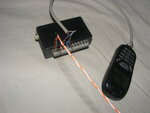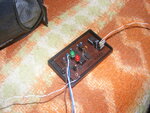johanfo
Junior Member level 1

Hi,
I have the following problem to solve. I have a storeage room 50m from my apartment, which I would like to have a simple alarm system which notifies me by SMS when triggered. Since this room has no power, the system's power source will have to be battery, and hence a very "low power" solution.
My design goes like this:
* A PCB board with a very low power circuit that monitors a magnetic switch (the alarm trigger). For zero power consumption, the system could be completely dead and only started when the switch triggers it.
* A GSM module, which will start-up when triggered, and notify me by SMS
In stage 2, I could (but this is more complicated):
* Make the system ring an alarm by responding to the alarm-sms.
My questions to you is:
* What kind of components would you use for this (pic, gsm module)? Take cost and simplicity into consideration.
* Do you have any suggestions, ideas or improvements for this project?
best regards
JF
I have the following problem to solve. I have a storeage room 50m from my apartment, which I would like to have a simple alarm system which notifies me by SMS when triggered. Since this room has no power, the system's power source will have to be battery, and hence a very "low power" solution.
My design goes like this:
* A PCB board with a very low power circuit that monitors a magnetic switch (the alarm trigger). For zero power consumption, the system could be completely dead and only started when the switch triggers it.
* A GSM module, which will start-up when triggered, and notify me by SMS
In stage 2, I could (but this is more complicated):
* Make the system ring an alarm by responding to the alarm-sms.
My questions to you is:
* What kind of components would you use for this (pic, gsm module)? Take cost and simplicity into consideration.
* Do you have any suggestions, ideas or improvements for this project?
best regards
JF








